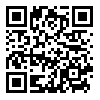

Volume 20, Issue 1 (5-2023)
ASWTR 2023, 20(1): 5-13 |
Back to browse issues page
Download citation:
BibTeX | RIS | EndNote | Medlars | ProCite | Reference Manager | RefWorks
Send citation to:



BibTeX | RIS | EndNote | Medlars | ProCite | Reference Manager | RefWorks
Send citation to:
Heidary Z, Nahvifard E, Shirkavand A, Mohajerani E. A Smartphone-Based Spectral Optical Imaging Setup and Quantifying a Skin Lesion Model Towards Clinical Application. ASWTR 2023; 20 (1) :5-13
URL: http://icml.ir/article-1-600-en.html
URL: http://icml.ir/article-1-600-en.html
Physics department, Basic Science Faculty, Imam Khomeini International University, Qazvin, Iran
Abstract: (1727 Views)
Objectives: In recent years, some non-invasive methods have been developed to assess the state of health and disease of the skin and tissues. The evaluation of patients by the doctor in terms of skin complications and recovery after laser treatment is done visually and based on experience. Therefore, it is suggested to use quantitative and instrumental methods along with the visual evaluation dependent on the doctor. This research is designed with the aim of providing an optical system based on spectroscopy and the use of mobile phones to investigate the distinction between healthy and unhealthy tissue in order to monitor and investigate the process of skin disease.
Methods & Materials: Diffuse reflection spectrometry and spectrum-based imaging methods have been used in this research. Analysis of spectroscopic data from a skin lesion of blood vessels as a study, a spectroscopic imaging method is presented.
Results: spectral data of the skin were analyzed and the difference between the absorption peak of the lesion with healthy skin and the skin with lesion was determined. In the following, using this distinction, the imaging system was proposed based on the results obtained from spectroscopy. This imaging system is a primary optical arrangement to obtain an image without mirror reflection and also to remove environmental factors such as ambient light. In fact, by choosing the index wavelength and lighting the lesion, it is possible to show a better distinction between that lesion and the surrounding healthy area. Also, in this system, a mobile camera is used as a detector.
Conclusion: After recording the image of the lesion and the healthy skin around it simultaneously in one image, image processing and quantification can be used to detect and check tissue changes.
Methods & Materials: Diffuse reflection spectrometry and spectrum-based imaging methods have been used in this research. Analysis of spectroscopic data from a skin lesion of blood vessels as a study, a spectroscopic imaging method is presented.
Results: spectral data of the skin were analyzed and the difference between the absorption peak of the lesion with healthy skin and the skin with lesion was determined. In the following, using this distinction, the imaging system was proposed based on the results obtained from spectroscopy. This imaging system is a primary optical arrangement to obtain an image without mirror reflection and also to remove environmental factors such as ambient light. In fact, by choosing the index wavelength and lighting the lesion, it is possible to show a better distinction between that lesion and the surrounding healthy area. Also, in this system, a mobile camera is used as a detector.
Conclusion: After recording the image of the lesion and the healthy skin around it simultaneously in one image, image processing and quantification can be used to detect and check tissue changes.
Keywords: Spectral optical imaging, diffuse reflectance spectroscopy, quantification, modeling, chromophores skin tissue
Educational: Research |
Subject:
General
Received: 2023/03/29 | Accepted: 2023/04/22 | Published: 2023/06/2
Received: 2023/03/29 | Accepted: 2023/04/22 | Published: 2023/06/2
Send email to the article author
| Rights and permissions | |
 |
This work is licensed under a Creative Commons Attribution-NonCommercial 4.0 International License. |


